Food production is indispensable for human beings, also providing an important foundation for regional industrial and economic activities. Poor management of the process damages the natural environment, impeding the food production itself.
In modern world, many developed countries depend its food supply on import from abroad. Disconcertingly, many environmental anomalies have been reported on the other ends, the countries that mass-produce and export the products. The ecosystem anomalies observed in Chilean coastal waters in recent years, especially frequent harmful algal bloom (HAB) occurrences, could be listed as one of the cases having link to food product export to Japan. This Chile-Japan binational cooperation project aims to characterize HAB dynamics in Chilean coastal waters from the environmental microbiology point of view: we propose to understand HAB as a holobiome (holo = whole, biome = ecosystem), specifically focusing on characterization of biological interaction among constituent microbe species to elucidate the bloom dynamics.
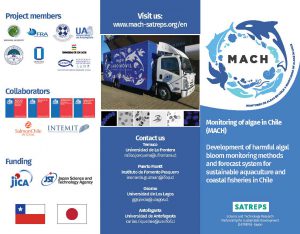

SATREPS MACH English Brochures(PDF version; for public)

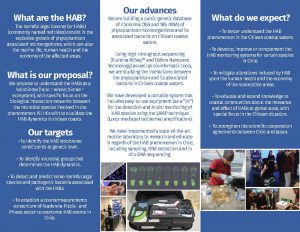
SATREPS MACH English Brochures (PDF version; for researchers)
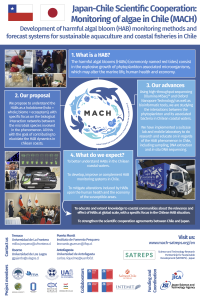
SATREPS MACH poster in English (high resolution version)
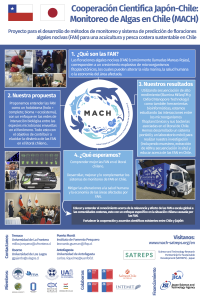
I. Project Background
Relationship between Chile and Japan
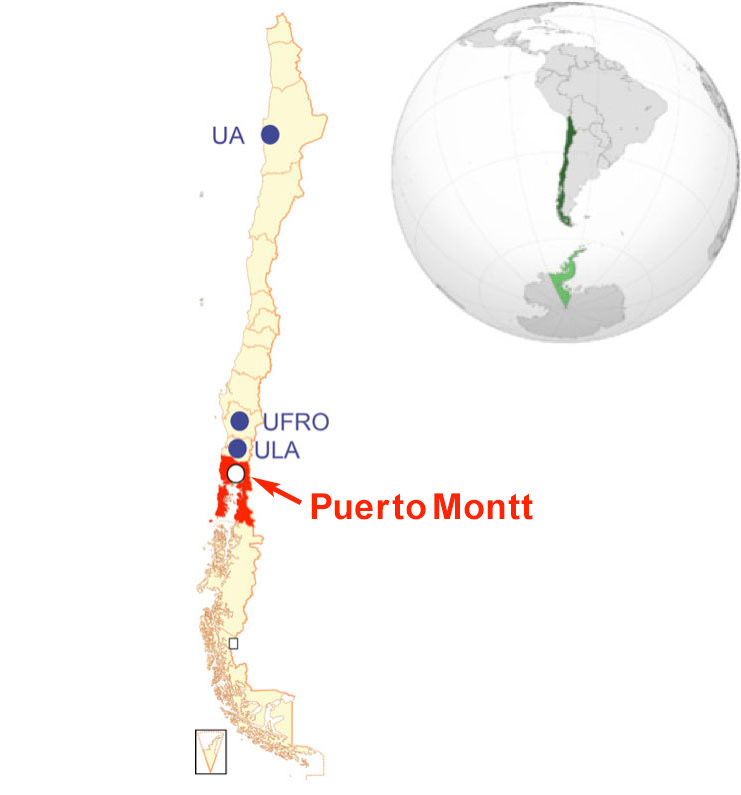
Chile is the second largest marine products exporter for Japan. In particular, Japan relies on Chile for as high as 1.2 billion USD(77% of total import)of import of salmon (Japan Fisheries Agency, 2014). In fact, salmon is ‘an alien species’ that were artificially introduced to Chile by technical cooperation program by Japan International Cooperation Agency (JICA) during 1960’s, and the current produces are 100% farm origin. The production rapidly increased from 1.3 to 3.6 billion USD during 2004 ~ 20014, brought about economic stability to the southern part of Chile, where otherwise with only minor industrial activities. On the other hand, fish diseases epidemic and HAB are emerging as threats to the industry, as well as to marine ecosystem of wider area. Large scale fish-killing HAB occurred nearby Puerto Montt during March ~ May in 2016, which caused serious damage to the industry, estimated as much as 0.5 ~ 1 billion USD (15% of total production). In addition to the fish-killing cases, accumulation of paralytic shellfish poison in natural and farmed shellfish due to HAB are reported, exerting serious adverse effects on both artisanal and farming fisheries as well as public health. Detailed investigations, particularly by environmental microbiology research, to counteract with these damages are urgently required.
HAB and biotic interaction (holobiome)
HAB dynamics is known to be affected by many environmental conditions, including water temperature, salinity, nutrient concentration, and day length. Besides these physicochemical factors, recent research indicates that biological factors may crucially determine the HAB behavior. For example, it is now widely accepted that the HAB extinction is due to the algicidal effect of some bacteria and virus infection. In particular, virus infection is based on the specific host-virus interactions determined at the molecular level, thus species-specific algicidal effect by viruses will ultimately push the ecosystem balance back to the one similar to before the HAB occurrence. In addition, several studies revealed that some bacteria propagated rapidly along the HAB growth, exerted their algicidal effects during the HAB peak, terminated the bloom.
Unlike the bloom termination process, mechanism for HAB formation remains obscure. Several recent studies revealed that species-specific interactions between phytoplankton and bacteria promote propagation of the former, thus implying the crucial roles of growth promoting bacteria during HAB formation.
These findings propose the significant impact of biotic interaction among marine microorganisms in the area with HAB species, as well as physicochemical conditions, i.e. salinity, temperature, eutrophication, and day length, on determination of HAB behavior. We propose to apprehend such a local microbiome ecosystem, including HAB species and related microbes in the area, as a ‘holobiome’. We propose that investigation of the interaction among the holobiome constituents is essential to understand HAB behavior in environment. To this end, we designed this international collaboration research project to decipher HAB behavior as HAB holobiome structure dynamics by incorporating various research approaches including isolations and characterizations of constituent microbes, physiological analysis of biotic interactions, as well as rapidly progressing metagenome and metatranscriptome analysis. This project will provide insights into HAB dynamics from environmental microbiological aspects, which has been largely missing from HAB research to date. Research output from this project will be thus expected to contribute to designing countermeasures to HAB not only in Chile, but in many countries including Japan.
II. Project Goal
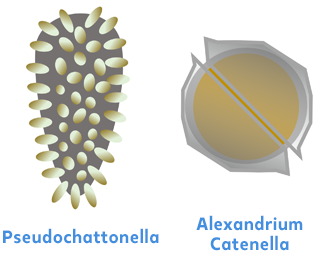
This project possesses two aspects: basic science research and social implementation of the research outputs. We plan to investigate HAB dynamics by exhaustive HAB holobiome analysis, to refine the research output for practical usage, and to utilize it to HAB dynamics prediction and development of HAB countermeasures. By achieving these plans, the output of the project will contribute to establish of sustainable fish farming protocols, stabilizing farming production, and preserving ecosystem. In addition, we aim to promote active scientific collaboration between Chile and Japan, and contribute to outreach education activities reaching out for wide audience in Chile through this project.
Basic Research
Charcterization of determinants of holobiome constituents
To identify HAB holobiome constituents including phytoplankton, bacteria and viruses, we will isolate and characterize these microbes from sea water and mud sediments, collected from the points that show the most frequent HAB occurrence. To understand the optimum physicochemical conditions for HAB formation, we characterize the optimum physicochemical conditions for the growth of these holobiome components, and effects of bacteria and viruses on phytoplankton physiology. The information will provide insights into the physicochemical and biological factors that determine the HAB dynamics in environment. In addition, we will identify partial genomic sequences of the holobiome-associating microbes to utilize for species identification required later in the project.
Applicatoin research
Multipoint holobiome monitoring using EZ kit and development of HAB dynamics forecast system
Next, the developed kit is to be distributed to fisheries practitioners, accumulate the data obtained from many sites to monitor quantitative change of HAB holobiome microbes. By integrating holobiome dynamics and environmental monitoring data, we will develop HAB dynamics prediction procedure in the area with high fisheries activities. Currently, the State through the National Fisheries and Aquaculture Service (SERNAPESCA) and the Fisheries Development Institute (IFOP), a private non-profit corporation, but linked to the State, carry out monitoring to safeguard the safety of shellfish products for human consumption, as to minimize the impacts derived from the HABs on the social and economic environment. They are also complemented by actions from the private world through non-profit NGOs such as the Technological Institute of Salmon (INTESAL) that also carries out a monitoring program of the HABs independently, for purposes related to salmon farming activities. We will integrate the data obtained by the three independent institutes with the ones obtained from this project, and aim to develop HAB dynamic prediction protocol by machine learning based on the integrated dataset.
Social implementations
Establishing industrial-government-academia interaction platform
As we share and integrate the data obtained from different monitoring programs, we also establish communication platform for the HAB related organizations. We will organize annual symposium aiming to communicate about HAB-related issues, among IFOP, SERNAPESCA, INTESAL, Ministry of Public Health (MINSAL), Environmental issue supervising department (SMA), salmon and shellfish farming enterprises, and HAB-related researchers for the project period. We also plan to organize open seminar and various training workshops for once or twice a year, to have better communication among different parties in industry, government and academia related to the issue. These activities will nurture better information sharing for designing HAB countermeasures. In addition, we would like to communicate the purpose and activities of this project with communities and NPO.
Construction of HAB forecast system
Based on the holobiome monitoring installed by the project, as well as ongoing environmental monitoring, we will establish the HAB dynamics forecast system, and construct the information delivery system available to the community. Currently, IFOP releases information by web- and paper-based regular bulletins. Therefore, we plan to upgrade this bulletin by incorporating HAB monitoring results and HAB forecast to ‘HAB Weather News’, a HAB forcast information delivery system. We also plan to refine the forecast protocol in the process of the system operation.